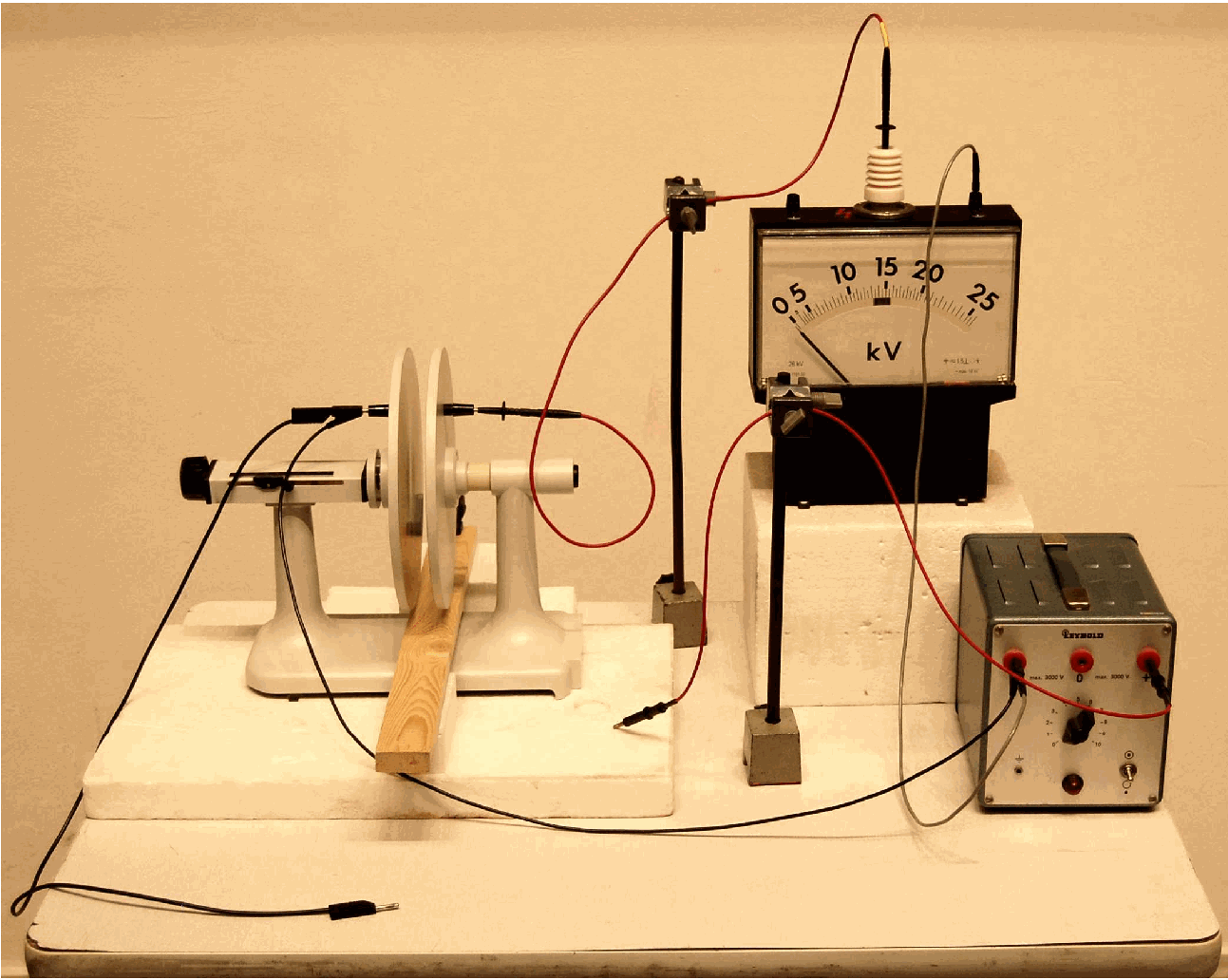02 Negative Temperature Coefficient#
Aim#
To show how the resistance of a semiconductor (P-Ge) depends on temperature.
Subjects#
5D20 (Resistivity and Temperature)
Diagram#

Fig. 482 .#
Equipment#
Bar of P-Ge
Power supply
Current meter with large display
Gas flame
Presentation#
Set the Ammeter at a \(1\mathrm{~A}\)-scale. The voltage of the power supply is raised until a current of about \(0.05\mathrm{~A}\) flows in the circuit. The bar of \(\mathrm{P}-\mathrm{Ge}\) is heated by the gas flame and soon the current rises to a much higher value. After a short time of heating the gas flame can be removed and the current continues to rise, faster and faster, only limited by the power supply.
Explanation#
The resistance of a semiconductor drops with temperature because at a higher temperature there are more free charge-carriers in it.
The current flowing in the material heats it up: \(P_{e l}=\frac{V^{2}}{R}\) The heat leaving the piece of material is proportional to \(\Delta T: P_{\text {out }} \propto \Delta T\) (Newton cooling). When \(P_{\text {out }}=P_{e l}\) there will be thermal equilibrium and the temperature is constant. Reaching such an equilibrium takes some time.
In this demonstration \(R\) lowers due to a rise in temperature and so \(P_{e l}\), rises due to a rise in temperature. When this rise is faster than the rise of \(P_{\text {out }}\) an ever faster rising of \(\Delta T\) (like an avalanche) will result.
